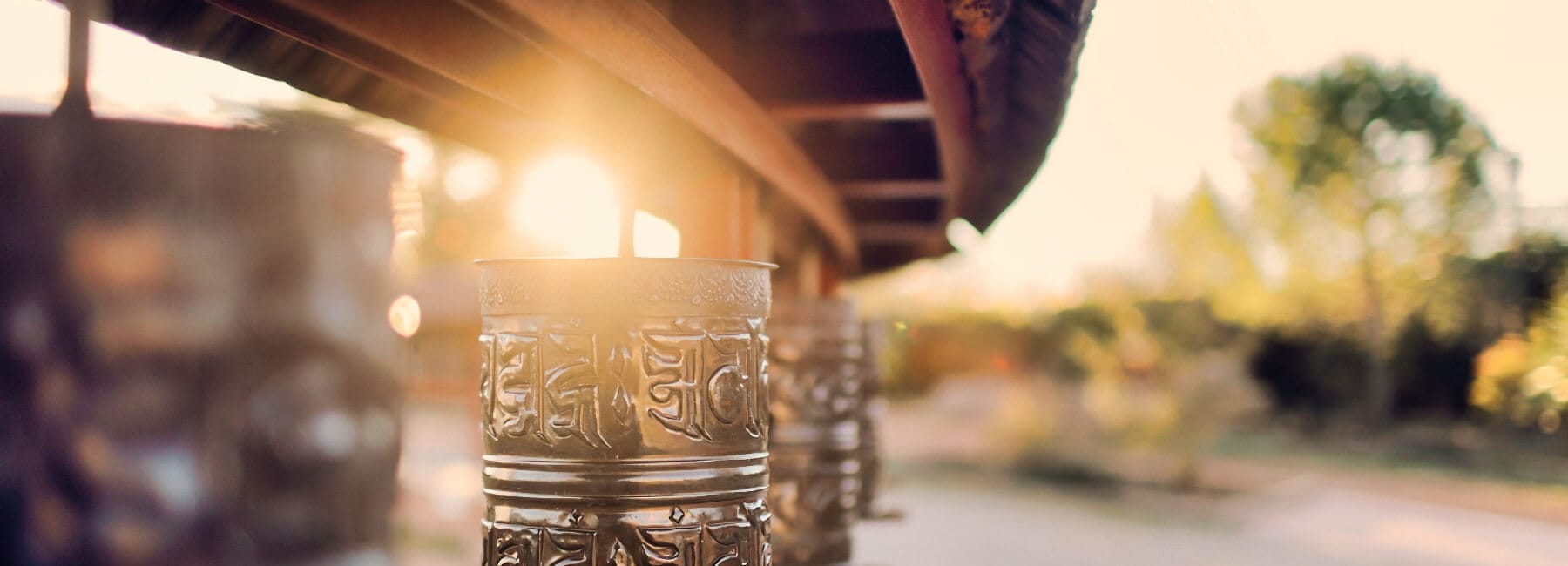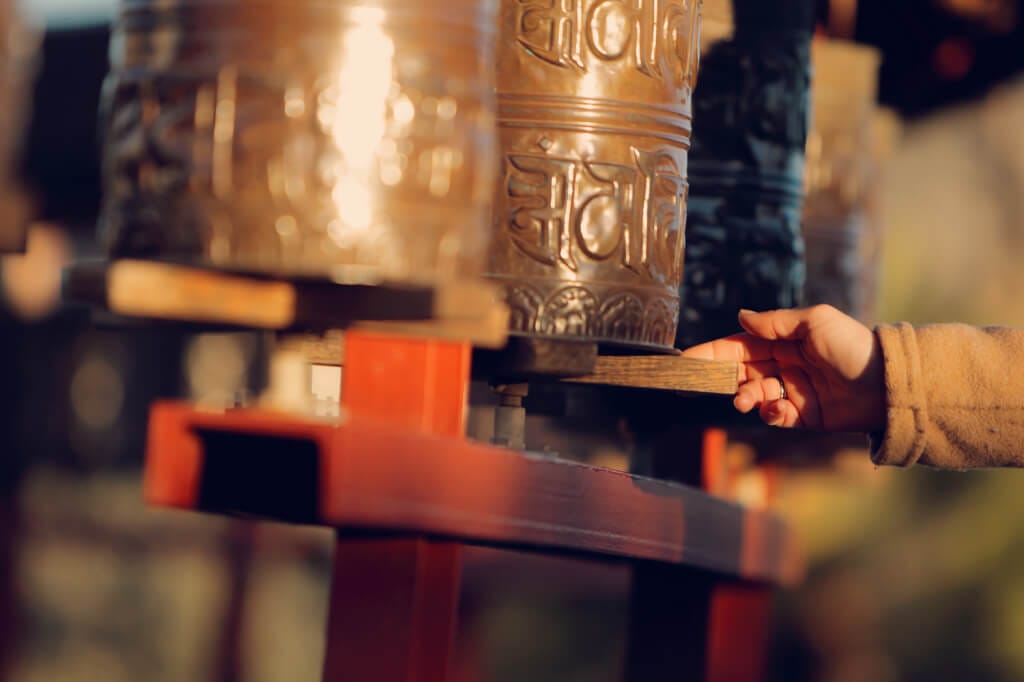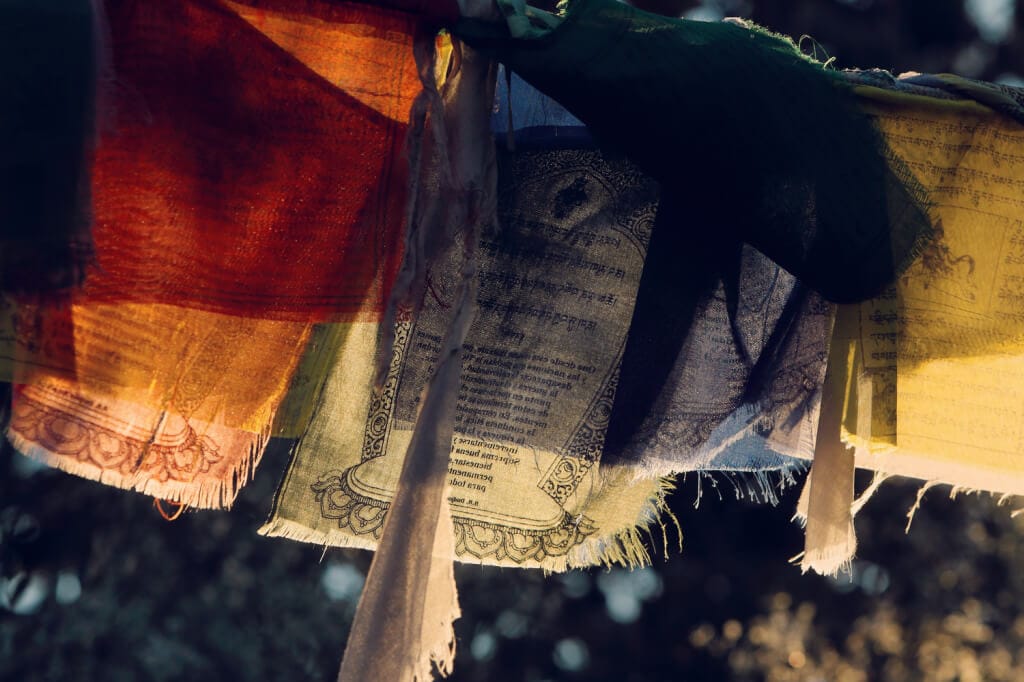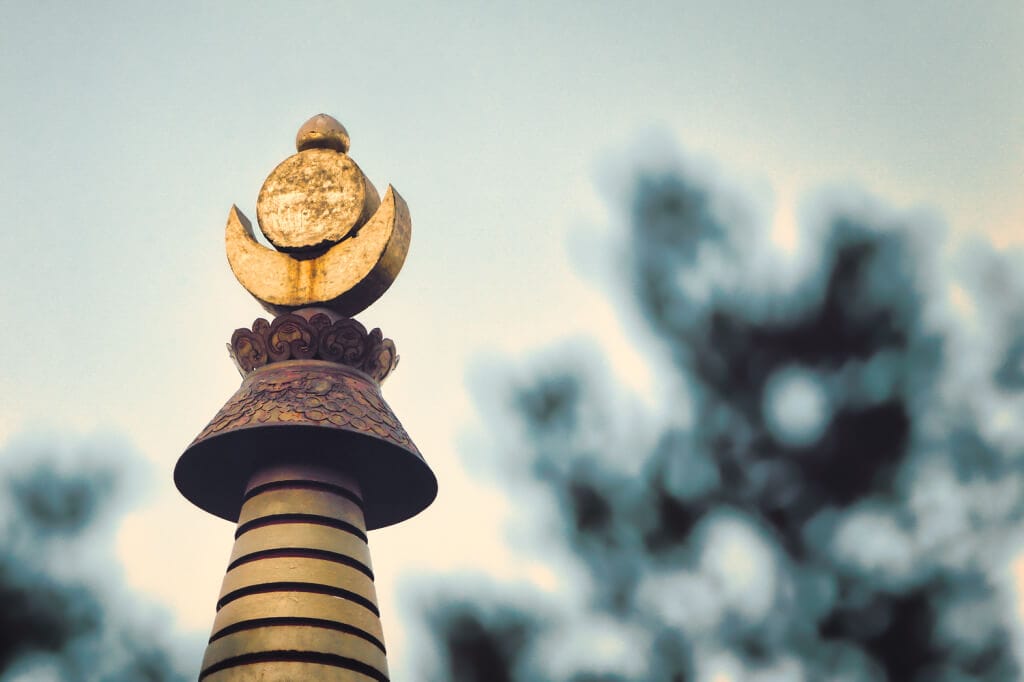
Stupas are reliquary monuments typical of Buddhism. Full of symbolism, they represent the different stages of meditation until achieving the realization of an awakened mind.
It is located in the outer courtyard of the Monastery. People who circumambulate the stupa benefit from better physical, mental, and spiritual health. It is surrounded by prayer wheels that have mantras or prayers engraved.
Located in the lemon tree courtyard, inside the monastery walls. It is consecrated to the wisdom and clarity sought through meditation practice.
Stupas are ideal places for introspection. Circumambulating them consciously, with our attention on the sensations of our body and our breathing, helps us stay in the present moment and benefit from the energy they emanate.
Circumambulating the Stupa by walking consciously, with our attention on the sensations of our body, on the movement of our legs, on the weight we place on each foot, on the air entering and leaving our lungs… will help us enjoy the present moment, avoiding worries about the past or future.
From gratitude arises generosity, the desire to reciprocate what others offer us. Place our mind on the desire that the energy and positive potential we benefit from at the Stupa is not just for us, but that we can expand that energy around us.
Analyzing the enormous effort involved in building the stupas helps us realize the generosity of the beings who have made them available to us. Valuing and appreciating the things we enjoy is a virtuous characteristic of the mind that frees us from suffering.
As we circumambulate the stupa with our mind placed on gratitude and generosity, we can wish that the positive energy emanating benefits all beings. Not only ourselves and our loved ones, but also neutral beings, those we don’t even know, or even beings with whom we have had conflicts. Benevolence, good wishes towards others, are a cause of happiness and should encompass all sentient beings.



Making offerings with a generous, benevolent, and altruistic mind allows us to connect with virtuous mental states that benefit not only our lives but also the beings around us.
Incense prepared in the traditional way, with medicinal plants and herbs, purifies the spaces we are in.
Light represents wisdom.
The flags have prayers printed on them, and as they are blown by the wind, they transmit wishes of benevolence to all beings.
Both for the quantity of relics they contain and their various consecrations, we can say that they are an immense catalyst of positive energies and foster an environment of peace, harmony, and tranquility, which are our most precious assets. It is a great blessing to have access to a stupa.
Being able to contribute to their conservation and maintenance to ensure access for many other beings is a show of great generosity that also results in one’s own benefit.
The construction of a Stupa requires ancestral knowledge, transmitted from master to disciple over centuries. Lamas dedicate their lives to spiritual practice and spend long years in meditation to become experts in this art.
Jamyang Dorje Rinpoché, founder of the Sakya Tashi Ling order, promoted the construction of the community’s Stupas, under the spiritual protection of HH Sakya Trizin and Ludig Kenche Rinpoche. Lama Chodrak, an expert master in Stupa construction, directed the work and left us an immeasurable legacy.
Lamas, monks, and artisans from Europe, India, Nepal, Bhutan, and Ancient Tibet participated in the construction of the Stupas, uniting the efforts of thousands of people during the years of construction.